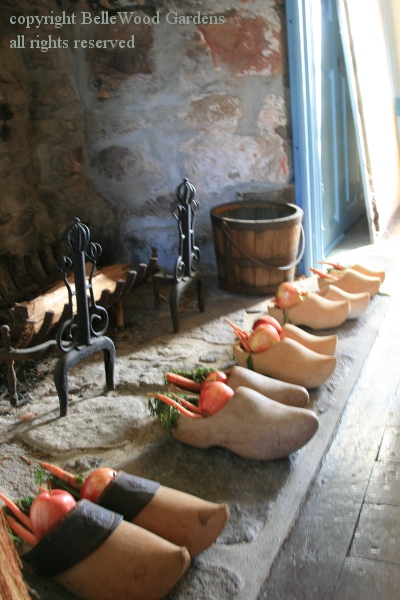
.
If you have any comments, observations, or questions about what you read here, remember you can always Contact Me
All content included on this site such as text, graphics and images is protected by U.S and international copyright law.
The compilation of all content on this site is the exclusive property of the site copyright holder.
Traditionally, the celebration should be on the 5th and 6th of December. That's when Sinterklaas, riding his white horse and accompanied by his helper, Swarte Piet comes to town. Children leave carrots and apples for his horse. Swarte Piet comes down the chimneys (well, how did you think he got so blackened, all covered in soot?) Good children received chocolate and candy, naughty children get coal.

Vader (father) and moeder (mother) and the three kinderen have lined up their klompen on the hearth, filled with treats for Amerigo, the good saint's horse.
No white horse, no one to wear the red robes and act as the saint today. But as a way to honor the Dutch heritage of the Bouman-Stickney Farmstead the house is decorated, guests can nibble on cookies, and (following the October and November presentations) there's a third open hearth cooking demonstration.
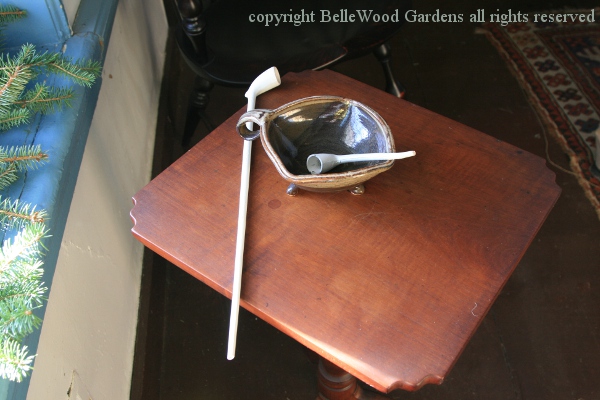
Leave the clay pipes on the table. Let's go downstairs to the kitchen. Careful, it's a typically Dutch, steep staircase.
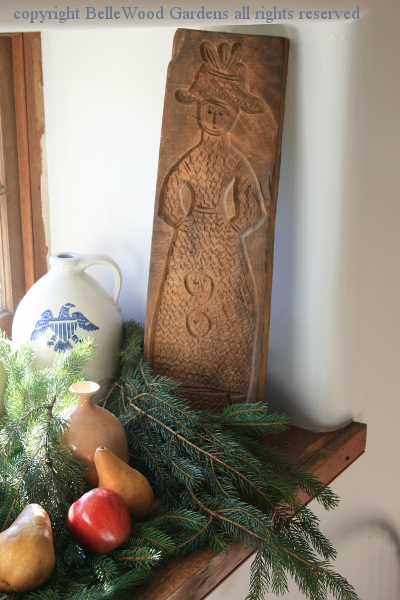
The window at the landing has a deep sill, just as you'd expect in a stone house. It's decorated with greenery, apples and pears, pottery jugs. I brought the speculaas mold that I bought when we were living in the Netherlands rather a long time ago. But only for the afternoon.
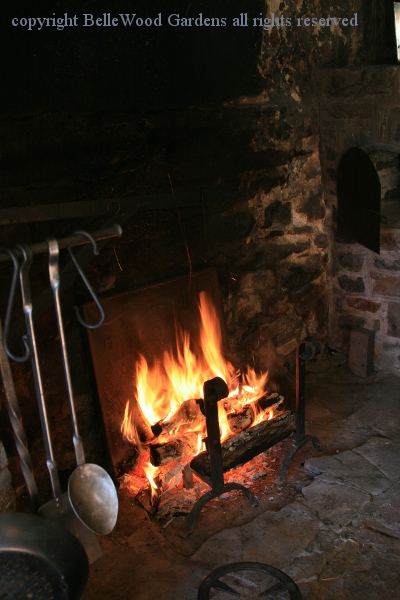
There's a good fire burning on the hearth.
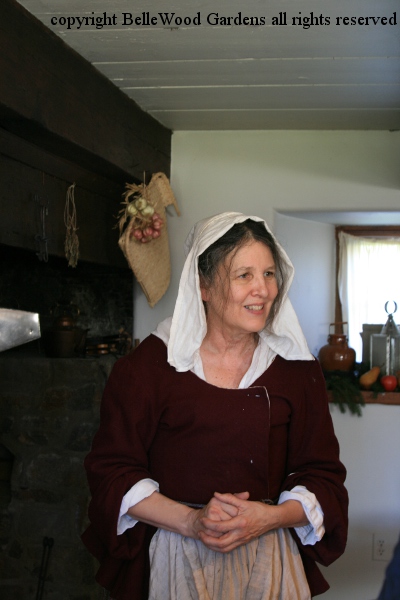
Today it is Susan McLellan Plaisted, a historic cook from Pennsbury Manor in Morrisville, Pennsylvania, is demonstrating authentic 18th century Dutch cooking.
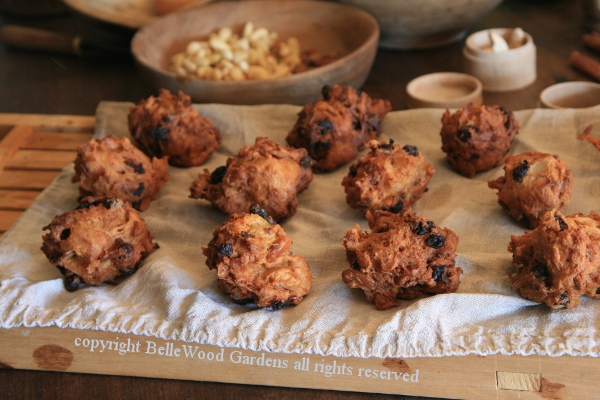
She's made oliekoeken, delicious little cakes fried in oil.
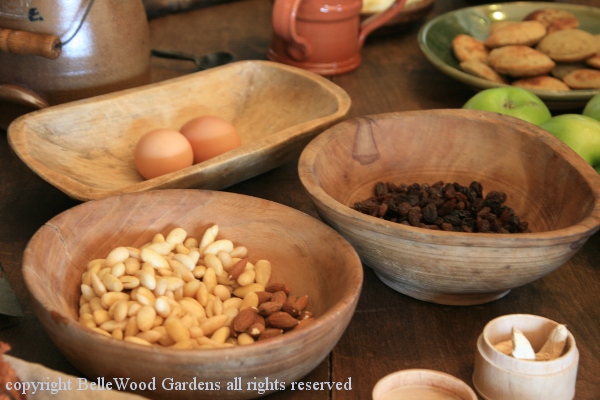
They have blanched almonds, raisins that were plumped with hot water, and finely sliced apples mixed into the batter. These fried oliekoeken (think of them like donuts without the hole) are traditional at this holiday time of year.
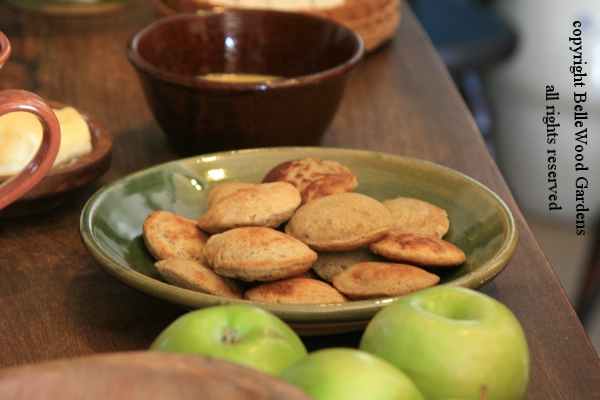
She's also making poffertjes, plump little pancakes made half and half with buckwheat and wheat flour. At other times of year it would be all buckwheat, Polygonum fagopyrum.
A quick growing annual, buckwheat matures in a third the time that wheat would take. Even better, the seeds can be crushed to flour in a quern, even by children. No need to take the wheat berries to the miller, who would keep a portion of the flour in payment for his work.
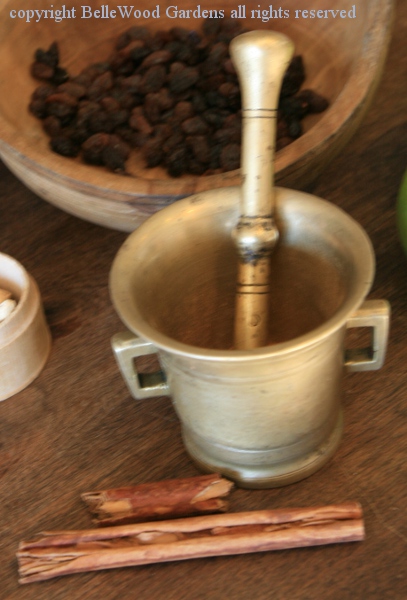
They're spiced with ginger and cinnamon and cloves. Nothing pre-ground back in the 18th century. The spices have to be pounded to a powder in a mortar and pestle.
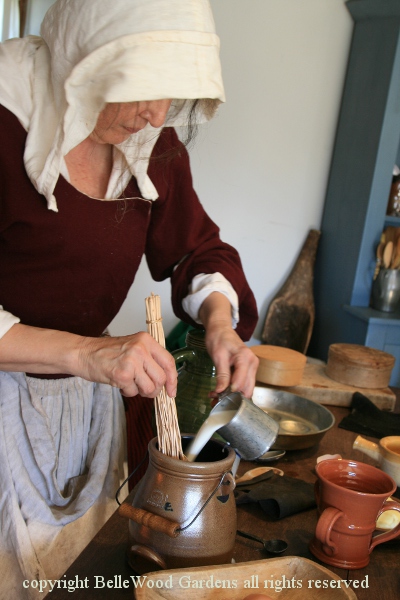
Poffertje batter also has eggs, and milk. The leavening is barm, the foam, or scum formed on the top of fermented alcoholic beverages such as beer. (Beer ferments with yeast, and bread is leavened with yeast. One makes more alcohol, the other more carbon dioxide. But each will work, to ferment or to leaven.) Households always brewed their own beer. Often, it was safer to drink than the water.
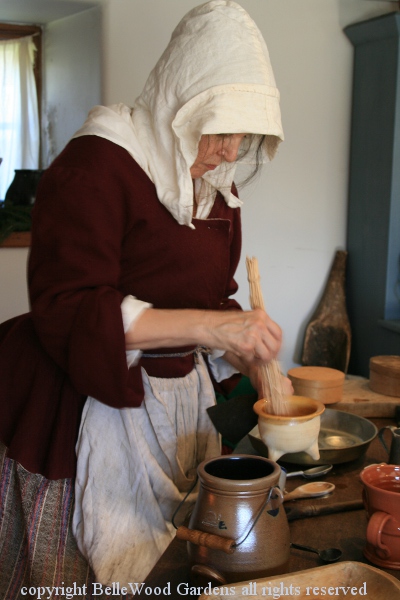
Whisk, whisk, whisk the batter with a broom corn whisk. It will take about an hour for the yeast to grow, set at the edge of the hearth where it's warm but not so hot as to cook it. Then the batter may be poured into the special poffertje pan and baked over the hot coals.
Another lovely event at the museum, very much enjoyed by the families who were here. Susan was really great with the children, involving them with whisking eggs, pounding spices, and really participating in a Dutch Christmas at the Bouman Stickney Museum.
Back to Top
Back to December 2014